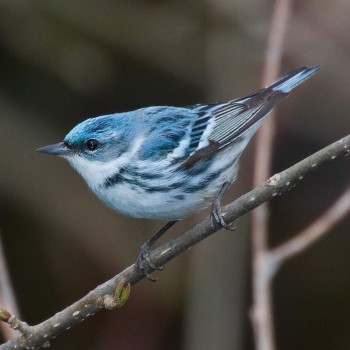
West Virginia is home to more than one-quarter of the world’s cerulean warblers, and if an $8 million habitat-improvement project is successful, that percentage might increase. The federally funded project will reimburse landowners who encourage loggers to spare the valuable oak and hickory trees the birds prefer for nesting.
CHARLESTON, W.Va. — For tiny birds that hardly anyone notices, cerulean warblers stand poised to put a lot of people to work.
The federal government is pouring $8 million into a project designed to improve the forest habitat the little blue-and-white birds need for nesting. Because West Virginia is home to an estimated 27 percent of all the cerulean warblers known to exist, a sizable chunk of that money will be spent in the Mountain State.
“This is a neat project,” said Paul Johansen, assistant wildlife chief for the state Division of Natural Resources. “A significant amount of that money will do wildlife-habitat work on private land. Cerulean warblers’ numbers are declining, and this work is an attempt to get out in front of that decline and prevent them from getting [placed on the federal Endangered Species List].”
Johansen said that if ceruleans end up on the list, timber owners would likely face federal sanctions for disturbing the birds’ habitat.
“We think that if we can put good habitat on the ground, we can reverse the decline. The birds win because their numbers increase, and landowners win because they can continue to sell their timber,” he added.
The project, expected to take five years, will subsidize timber cutting specially designed to enhance cerulean warbler nesting habitat. Petra Wood, a professor at West Virginia University and an expert on the species, said ceruleans like to nest in the tops of large trees near gaps in the forest canopy.
“They reproduce best where the canopy is 45 to 55 percent intact,” Wood explained. “There are two ways of putting gaps in the canopy…





